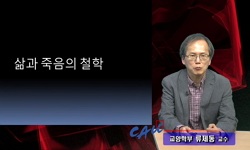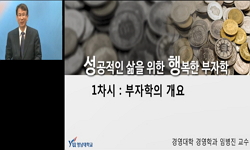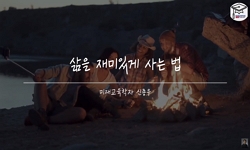This paper is intended to examine various divination practices in Korea, focused on the occasions when and how the divination practices performed and by agents they have been carried out in daily life of Korean. As a result of this inquiry the divinat...
http://chineseinput.net/에서 pinyin(병음)방식으로 중국어를 변환할 수 있습니다.
변환된 중국어를 복사하여 사용하시면 됩니다.
- 中文 을 입력하시려면 zhongwen을 입력하시고 space를누르시면됩니다.
- 北京 을 입력하시려면 beijing을 입력하시고 space를 누르시면 됩니다.
https://www.riss.kr/link?id=A106385790
-
저자
이용범 (안동대학교)
- 발행기관
- 학술지명
- 권호사항
-
발행연도
2019
-
작성언어
Korean
-
주제어
divination ; life ; daily life culture ; status in life ; complexity ; uncertainty ; 점복 ; 삶 ; 일상문화 ; 삶에서의 위상 ; 복합성 ; 불확실성
-
등재정보
KCI등재
-
자료형태
학술저널
-
수록면
74-104(31쪽)
-
KCI 피인용횟수
0
- DOI식별코드
- 제공처
- 소장기관
-
0
상세조회 -
0
다운로드
부가정보
다국어 초록 (Multilingual Abstract)
This divination has been periodically practiced and has been performed when needed in relation with various aspects of Korean life. And it is not practiced in a certain period of time but has been practiced through the Korean history over all. All these accounts being considered, the divination is a latent element of Korean life structure. Therefore, this historical facts of the divination practices cannot be denied in Korean daily life and it is unrealistic that we pejoratively condemn the divination to be one of the superstitions.
The function of the divination rather works as a means of overcoming the uncertainty, that is a general condition of human life. And it helps to establish one’s own independent life. In this paper I tried to expose that the divination contribute to a positive life stance for constructing one’s future life through anticipating one’s future. So divination is far from the passive and predetermined life view, simply accepting one’s own given destiny.
The reasonable assessments such as I pointed out above have not been fully explored yet in the divination studies. Only negative aspects of divination has been dominantly perceived in Korean society. The dealings with divination have not been sufficiently treated in terms of its status and roles in reference to Korean life. As for the divination studies, especially the typology, the methodology of divination, and the divination experts are major subjects of the divination studies. But the studies on the status, the roles, and the meanings of divination in the context of and/or in reference to Korean life has been slightly dealt. Form this evaluations I hope that this paper can contribute to a filling of some missing parts in the divination studies in Korea.
This paper is intended to examine various divination practices in Korea, focused on the occasions when and how the divination practices performed and by agents they have been carried out in daily life of Korean. As a result of this inquiry the divination has been commonly practiced, disregard of any particular sectors of Korean daily life. Everyone has ordinarily practiced this divination, not limited to an individual and to the state, or any special social groups.
This divination has been periodically practiced and has been performed when needed in relation with various aspects of Korean life. And it is not practiced in a certain period of time but has been practiced through the Korean history over all. All these accounts being considered, the divination is a latent element of Korean life structure. Therefore, this historical facts of the divination practices cannot be denied in Korean daily life and it is unrealistic that we pejoratively condemn the divination to be one of the superstitions.
The function of the divination rather works as a means of overcoming the uncertainty, that is a general condition of human life. And it helps to establish one’s own independent life. In this paper I tried to expose that the divination contribute to a positive life stance for constructing one’s future life through anticipating one’s future. So divination is far from the passive and predetermined life view, simply accepting one’s own given destiny.
The reasonable assessments such as I pointed out above have not been fully explored yet in the divination studies. Only negative aspects of divination has been dominantly perceived in Korean society. The dealings with divination have not been sufficiently treated in terms of its status and roles in reference to Korean life. As for the divination studies, especially the typology, the methodology of divination, and the divination experts are major subjects of the divination studies. But the studies on the status, the roles, and the meanings of divination in the context of and/or in reference to Korean life has been slightly dealt. Form this evaluations I hope that this paper can contribute to a filling of some missing parts in the divination studies in Korea.
국문 초록 (Abstract)
한국 사회에서 점복은 삶의 다양한 측면과 연관되어 정기적으로 또는 필요에 따라실행되었고, 이는 어느 한 시기에 그치지 않는다. 이런 점에서 점복은 한국인의 삶의 구조적 요소의 하나였다고 말할 수 있다. 따라서 이런 역사적 사실을 부인하고 점복을 미신으로 파악하는 태도는 비현실적이다.
고대에서 현재까지 오랜 기간 점복이 한국인의 삶에서 일상문화의 하나로 지속되어 온 배경으로, 이 글은 점복이 인간 삶의 일반적 조건인 불확실성을 극복하고 주체적인 삶을 살도록 하는 데 중요한 역할을 담당한 점을 들었다. 또한 점복에서 두드러진 미래에 대한 관심은 미래를 미리 파악함으로써 미래의 삶을 원하는 모습으로 구성해나갈수 있다고 믿는 적극적인 삶의 태도가 반영된 것임을 밝혔다. 따라서 점복은 주어진 운명에 순응하는 수동적이고 숙명론적인 인생관과는 거리가 멀다.
이렇듯 점복이 한국인의 삶에서 일상문화의 하나로 자리잡고 일정한 역할을 수행해왔음에도 불구하고, 아직도 한국 사회에서는 점복에 대한 정당한 평가가 이뤄지지 않고 있다. 여전히 점복에 대한 부정적 인식이 지배적이다. 이런 판단에서 이 글은 한국인의 삶에서 점복이 어떤 위치를 차지하며 어떤 의미를 지니고 있는가를 밝히고자 하였다 , 한국 사회의 점복에 대한 연구는 점복이 한국인의 삶에서 차지해 온 실제 위상과 역할에 비할 때 충분하다고 말하기 어렵다. 그동안 점복의 역사, 점복의 유형과 방식, 전문 점복자, 점복의 실태 등을 중심으로 점복에 대한 연구가 이뤄져 왔다. 특히 점복의 유형과 방식 및 전문 점복자에 대한 연구가 주를 이뤄왔다. 반면 한국인의 삶에서 나타난점복의 위상과 역할, 의미 등에 대한 연구는 미미하였다. 이런 점에서 이 글은 기존 점복연구의 빈자리를 채우는 의의가 있다고 말할 수 있다.
이 글은 한국인의 삶에서 차지하는 점복의 위상을 파악하기 위해 점복의 실천 계기, 점복의 방식, 점복의 실천 주체를 중심으로 한국 사회에서 행해진 다양한 점복을 살펴보았다. 그 결과 점...
이 글은 한국인의 삶에서 차지하는 점복의 위상을 파악하기 위해 점복의 실천 계기, 점복의 방식, 점복의 실천 주체를 중심으로 한국 사회에서 행해진 다양한 점복을 살펴보았다. 그 결과 점복은 한국인의 삶의 거의 모든 영역과 연관되어 행해지며, 어떤 개인이나 국가, 또는 특수한 집단에 한정되지 않고 누구나 일상적으로 행할 수 있음을 확인하였다. 이를 통해 점복은 한국인의 삶에서 일상문화의 하나로 자리잡아 왔음을 알 수있었다.
한국 사회에서 점복은 삶의 다양한 측면과 연관되어 정기적으로 또는 필요에 따라실행되었고, 이는 어느 한 시기에 그치지 않는다. 이런 점에서 점복은 한국인의 삶의 구조적 요소의 하나였다고 말할 수 있다. 따라서 이런 역사적 사실을 부인하고 점복을 미신으로 파악하는 태도는 비현실적이다.
고대에서 현재까지 오랜 기간 점복이 한국인의 삶에서 일상문화의 하나로 지속되어 온 배경으로, 이 글은 점복이 인간 삶의 일반적 조건인 불확실성을 극복하고 주체적인 삶을 살도록 하는 데 중요한 역할을 담당한 점을 들었다. 또한 점복에서 두드러진 미래에 대한 관심은 미래를 미리 파악함으로써 미래의 삶을 원하는 모습으로 구성해나갈수 있다고 믿는 적극적인 삶의 태도가 반영된 것임을 밝혔다. 따라서 점복은 주어진 운명에 순응하는 수동적이고 숙명론적인 인생관과는 거리가 멀다.
이렇듯 점복이 한국인의 삶에서 일상문화의 하나로 자리잡고 일정한 역할을 수행해왔음에도 불구하고, 아직도 한국 사회에서는 점복에 대한 정당한 평가가 이뤄지지 않고 있다. 여전히 점복에 대한 부정적 인식이 지배적이다. 이런 판단에서 이 글은 한국인의 삶에서 점복이 어떤 위치를 차지하며 어떤 의미를 지니고 있는가를 밝히고자 하였다 , 한국 사회의 점복에 대한 연구는 점복이 한국인의 삶에서 차지해 온 실제 위상과 역할에 비할 때 충분하다고 말하기 어렵다. 그동안 점복의 역사, 점복의 유형과 방식, 전문 점복자, 점복의 실태 등을 중심으로 점복에 대한 연구가 이뤄져 왔다. 특히 점복의 유형과 방식 및 전문 점복자에 대한 연구가 주를 이뤄왔다. 반면 한국인의 삶에서 나타난점복의 위상과 역할, 의미 등에 대한 연구는 미미하였다. 이런 점에서 이 글은 기존 점복연구의 빈자리를 채우는 의의가 있다고 말할 수 있다.
참고문헌 (Reference)
1 서영대, "한국사16: 고려 전기의 종교와 사상" 국사편찬위원회 1994
2 서영대, "한국민속연구사" 지식산업사 1994
3 송석하, "한국민속고" 일신사 1960
4 은화수, "한국 출토 복골에 관한 고찰" 호남고고학회 (10) : 1999
5 서영대, "한국 고대의 종교직능자" 서경문화사 12 : 1997
6 "택당선생별집(澤堂先生別集)"
7 "태종실록"
8 최선혜, "조선전기 국왕의 점술 맹인 활용과 그 의의" 호남사학회 (33) : 91-124, 2008
9 村山智順, "조선의 점복과 예언" 동문선 1991
10 박종천, "조선 중기 광산김씨 예안파의의례 실천과 일상생활―계암일록과 매원일기를 중심으로" 한국국학진흥원 (33) : 409-452, 2017
1 서영대, "한국사16: 고려 전기의 종교와 사상" 국사편찬위원회 1994
2 서영대, "한국민속연구사" 지식산업사 1994
3 송석하, "한국민속고" 일신사 1960
4 은화수, "한국 출토 복골에 관한 고찰" 호남고고학회 (10) : 1999
5 서영대, "한국 고대의 종교직능자" 서경문화사 12 : 1997
6 "택당선생별집(澤堂先生別集)"
7 "태종실록"
8 최선혜, "조선전기 국왕의 점술 맹인 활용과 그 의의" 호남사학회 (33) : 91-124, 2008
9 村山智順, "조선의 점복과 예언" 동문선 1991
10 박종천, "조선 중기 광산김씨 예안파의의례 실천과 일상생활―계암일록과 매원일기를 중심으로" 한국국학진흥원 (33) : 409-452, 2017
11 최선혜, "조선 전기 재지품관의 제사와 기복 민속의식" 조선시대사학회 (29) : 5-45, 2004
12 이창익, "조선 시대 달력의 변천과 세시의례" 창비 2013
13 "임하필기(林下筆記)"
14 "영조실록"
15 "숙종실록"
16 "송자대전(宋子大全)"
17 "세조실록"
18 "성호전집"
19 "성재집(省齋集)"
20 이문주, "성인식으로서의 관례의 구조와 의미분석" 한국유교학회 (17) : 25-50, 2002
21 "삼국사기"
22 이현숙, "백제시대 점복과 정치" 한국역사민속학회 (25) : 7-43, 2007
23 "백사별집(白沙別集)"
24 이복규, "묵재일기에 나타난 조선 전기의 민속" 민속원 1999
25 "묵재일기(默齋日記)"
26 "면암선생문집(勉菴先生文集)"
27 "동춘당집(同春堂集)"
28 "금계일기(錦溪日記)"
29 김선희, "고려시대 국가 차원의 점복" 청람사학회 21 : 2013
30 "계곡선생집(谿谷先生集)"
31 "갈암집(葛庵集)"
32 김주희, "2000년대 도시 여성의 출산문화: 문화변동의 장" 한국문화인류학회 40 (40): 253-286, 2007
동일학술지(권/호) 다른 논문
-
- 종교문화비평학회
- 김지현
- 2019
- KCI등재
-
북미 심층생태학의 전개와 특성: 생태학과 종교/영성의 결합을 중심으로
- 종교문화비평학회
- 유기쁨
- 2019
- KCI등재
-
“씌어지지 않은 것을 읽기”: 점술의 사유와 이미지 사유
- 종교문화비평학회
- 최화선
- 2019
- KCI등재
-
근세 일본의 기근 사자와 지장신앙 : 1732~33년의 교호 대기근과 우에닌지조(飢人地藏)
- 종교문화비평학회
- 박병도
- 2019
- KCI등재
분석정보
인용정보 인용지수 설명보기
학술지 이력
| 연월일 | 이력구분 | 이력상세 | 등재구분 |
|---|---|---|---|
| 2026 | 평가예정 | 재인증평가 신청대상 (재인증) | |
| 2020-01-01 | 평가 | 등재학술지 유지 (재인증) |  |
| 2017-01-01 | 평가 | 등재학술지 유지 (계속평가) |  |
| 2013-01-01 | 평가 | 등재학술지 유지 (등재유지) |  |
| 2010-01-01 | 평가 | 등재학술지 선정 (등재후보2차) |  |
| 2009-01-01 | 평가 | 등재후보 1차 PASS (등재후보1차) |  |
| 2008-01-01 | 평가 | 등재후보학술지 유지 (등재후보1차) |  |
| 2006-01-01 | 평가 | 등재후보학술지 선정 (신규평가) |  |
학술지 인용정보
| 기준연도 | WOS-KCI 통합IF(2년) | KCIF(2년) | KCIF(3년) |
|---|---|---|---|
| 2016 | 0.41 | 0.41 | 0.35 |
| KCIF(4년) | KCIF(5년) | 중심성지수(3년) | 즉시성지수 |
| 0.4 | 0.4 | 0.629 | 0.06 |




 KISS
KISS







